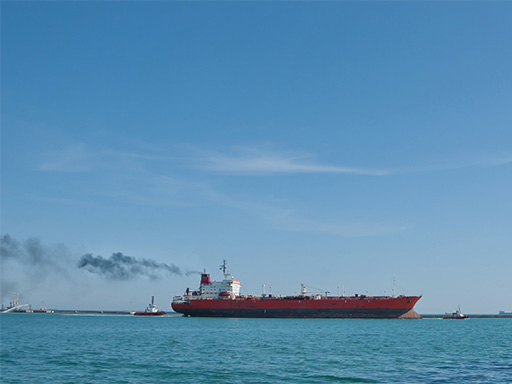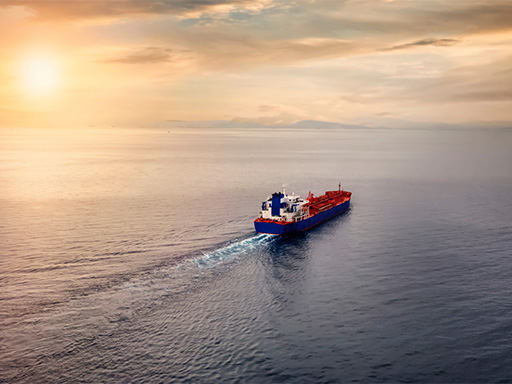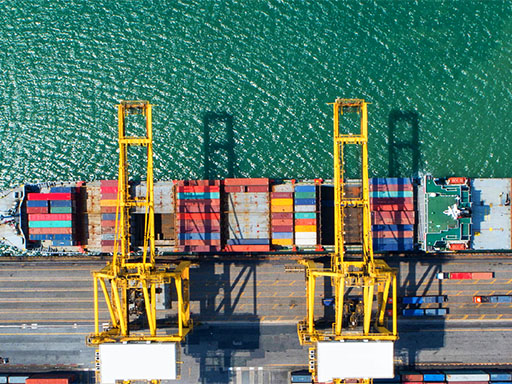Fuel EU Maritime Regulation

The Fuel EU Maritime Regulation is a complementary regulation to the EU ETS, ensuring that the greenhouse gas intensity of fuels used by the shipping sector will gradually decrease over time. It contributes to the EU-wide target of reducing net emissions by at least 55% by 2030, and to achieving climate neutrality in 2050.
The political agreement already reached on 23 March 2023 was formally adopted on 13 September and has applied from 1 January 2025 (except for Monitoring Plan articles, which have applied from 31 August 2024).
Access the Fuel EU Maritime RegulationA number of implementing and delegated acts related to the FuelEU have already been adopted and are published. These are:
The following implementing acts are upcoming, and public feedback will be requested soon:
Exemptions applied by Member States C/2024/7469 - exemptions to be applied by Greece under articles 2(3) and 2(6) of regulation (EU) 2023/1805 (Publication date: 17.12.2024) C/2024/7470 - exemptions to be applied by Italy under articles 2(3) and 2(6) of regulation (EU) 2023/1805 (Publication date: 17.12.2024) C/2024/7471 - exemptions to be applied by Denmark under articles 2(3) and 2(6) of regulation (EU) 2023/1805 (Publication date: 17.12.2024) C/2024/7472 - exemptions to be applied by Malta under articles 2(3) and 2(6) of regulation (EU) 2023/1805 (Publication date: 17.12.2024) C/2025/356 - exemptions to be applied by Spain under articles 2(3) and 2(6) of regulation (EU) 2023/1805 (Publication date: 13.01.2025) C/2025/3449 - exemptions to be applied by Spain under article 2(4) of regulation (EU) 2023/1805 (Publication date: 20.06.2025) C/2025/357 - exemptions to be applied by France under articles 2(3) and 2(6) of regulation (EU) 2023/1805 (Publication date: 13.01.2025) C/2025/3448 - exemptions to be applied by France under article 2(6) and 2(6) of regulation (EU) 2023/1805 (Publication date: 20.06.2025) C/2025/358 - exemptions to be applied by Portugal under articles 2(3) and 2(6) of regulation (EU) 2023/1805 (Publication date: 13.01.2025) C/2025/635 - exemptions to be applied by Cyprus under article 2(5) of regulation (EU) 2023/1805 (Publication date: 27.01.2025) C/2025/636 - exemptions to be applied by Croatia under articles 2(3) and 2(6) of regulation (EU) 2023/1805 (Publication date: 27.01.2025) C/2025/969 - exemptions to be applied by Finland under articles 2(3) of regulation (EU) 2023/1805 (Publication date: 07.02.2025) |
The Regulation aims to reduce greenhouse gas emissions from the shipping sector, by promoting the use of cleaner fuels and energy, promoting the decarbonisation of the maritime transport sector by setting maximum limits on the yearly greenhouse gas intensity of the energy used by a ship.
The limits will become more ambitious over time, from a decrease of 2% in 2025 to as much as 80% by 2050, to stimulate and reflect the expected developments in technology and the increased production of renewable and low-carbon fuels.
The targets cover not only carbon dioxide CO2 emissions, but also methane (CH4) and nitrous oxide (N2O) emissions over the full lifecycle of the fuels, considering the Well to Wake principle.
The new rules also introduce an additional zero-emission requirement at berth, mandating the use of onshore power supply (OPS) or alternative zero-emission technologies in ports by passenger ships and containerships, with a view to mitigating air pollution emissions in ports, which are often close to densely populated areas.
Fuel EU Maritime takes a goal-based and technology-neutral approach, allowing for innovation and the development of new fuel technologies to meet future needs, and offering operators the freedom to decide which to use based on ship-specific or operation-specific profiles.
The Regulation also provides for a voluntary pooling mechanism. Under this scheme, ships are allowed to pool their compliance balance with one or more other ships. Thus, it will be the pool as a whole that has to meet the greenhouse gas intensity limits on average.
The Fuel EU Maritime Regulation scope considers vessels above 5 000 gross tonnage, calling EEA ports, no matter what flag they fly (EU/non-EU), and includes:
![]() 100% of the energy used from ships calling at an EU/EEA port for voyages within the EU/EEA (intra-EU)
100% of the energy used from ships calling at an EU/EEA port for voyages within the EU/EEA (intra-EU)
![]() 50% of the energy used from voyages to or from EU ports (extra-EU/EEA)
50% of the energy used from voyages to or from EU ports (extra-EU/EEA)
![]() 100% of the energy used when ships are at berth in EU/EEA ports.
100% of the energy used when ships are at berth in EU/EEA ports.
From 2025, shipping companies have been reporting their emissions through the THETIS MRV platform, which is operated and maintained by EMSA, and which acts as a one-stop-shop for companies.








